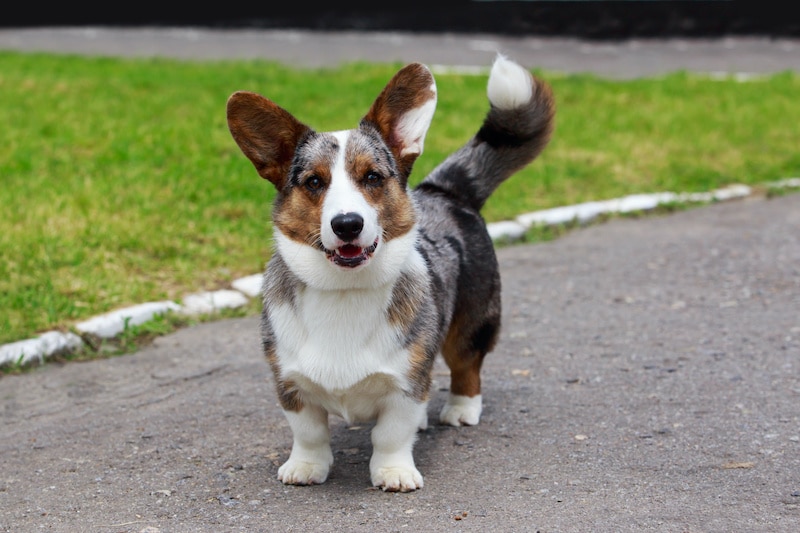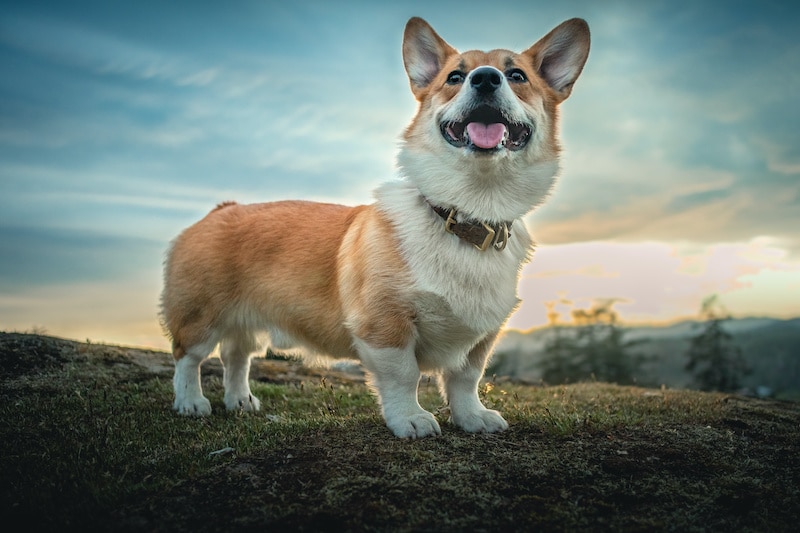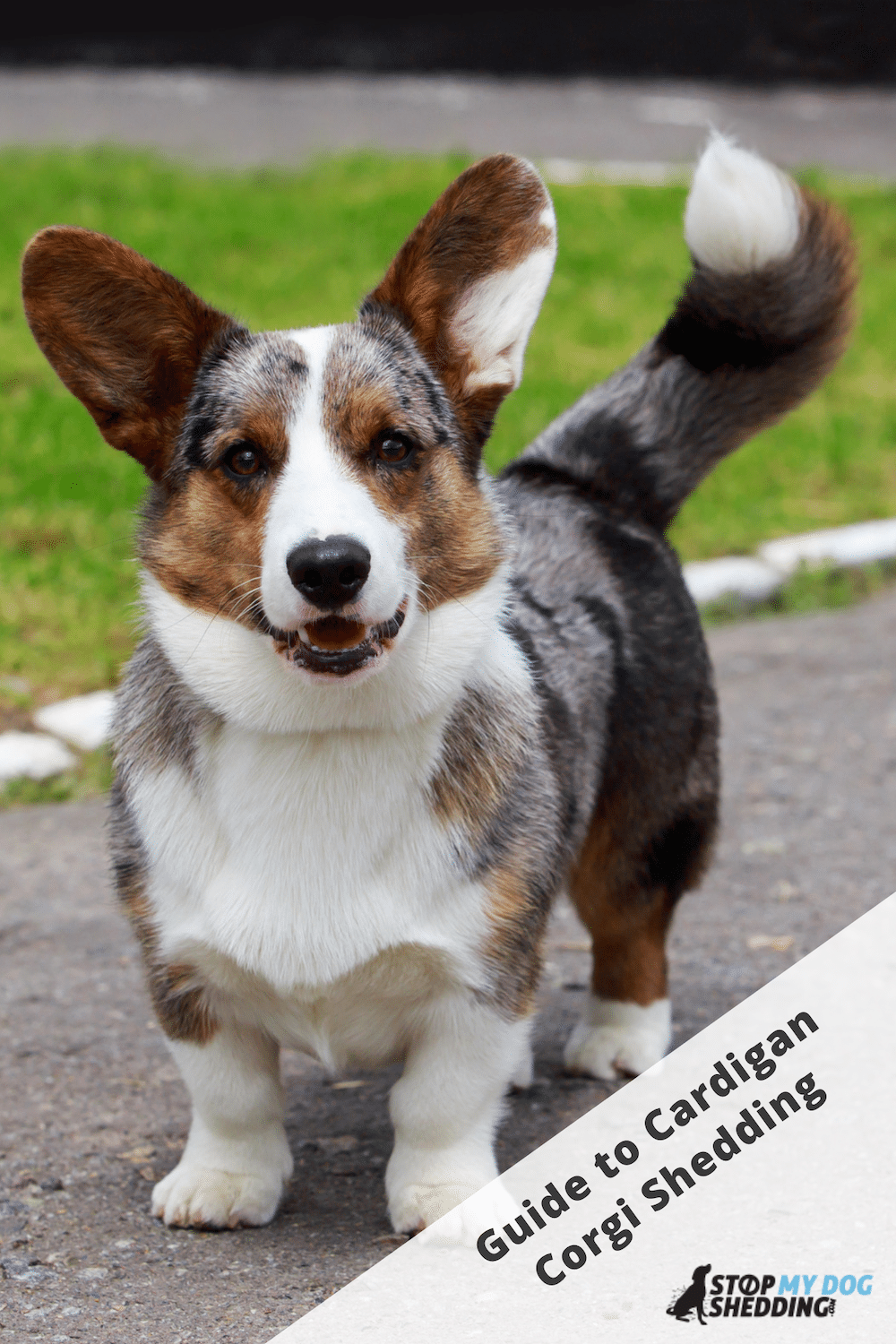Cardigan Welsh Corgis (AKA Cardis or Cardigans) were named after their historic home county of Cardiganshire, Wales. He is one of only two types of Corgi, the other is the Pembroke Welsh Corgi, and was bred to herd cattle and sheep.
What about shedding?
Cardigan Welsh Corgis are high shedding dogs that have short, dense undercoats and thick outer coats that protect them from weather extremes.
They’re not very difficult to groom, but you will need to brush them often to keep the shedding under control, especially during periods of heavier seasonal shedding.
In this article, we’ll take a closer look at how much Cardis shed, what you can do to minimize it, and what makes this such a unique breed.
Recommended: Go here to see our top-rated dog hair blow dryers
Cardigan Welsh Corgi Shedding
Cardigan Welsh Corgis are a high shedding breed.
So if you’re looking for a dog that doesn’t shed very much, the Cardi isn’t for you. There are ways you can reduce this, and we’ll get into that shortly. But left unchecked, they will fill your home with fur.
The same is true for the Pembroke Corgi, they’re not much different in this respect. And they shed about the same as a Vallhund, which in many ways is a similar breed.
Either way, shedding is what most dogs do, so in most cases, it’s nothing to worry about. It’s a natural process where the old fur stops growing and falls out, to make way for the new batch.
This is part of the hair growth cycle that every dog with hair goes through. It’s just that some dogs, like the Cardi, shed at a higher rate.
Another factor that contributes to higher levels of shedding is whether or not the dog has a double or single coat. The Cardigan is a double-coated breed. It has a soft, dense undercoat and a longer, thick top coat. This suits them well given that they’re from Britain, where it is often cold.
However, the double coat does mean they shed seasonally.
Seasonal shedding basically just means they lose more fur at certain times of the year as the weather begins to change. And it typically occurs during spring and fall.
So you will notice that your Cardi sheds more during these times. So much so that you might think you’ve got a second dog after brushing all that loose fur off of him!
What are Cardis Like to Groom?
Thankfully, Cardigan Welsh Corgis are fairly easy to groom. A simple brush once or twice per week, and a monthly bath, is really all that’s required to maintain their coat.
However, because they shed so profusely, it’s worth brushing daily. This is going to be your best defense against spending hours behind the vacuum cleaner each month.
The more hair you can get off of your Cardi, the less of it will end up on your floor, furniture, clothing and upholstery. It’s also good for their coat, so it is well worth the effort.
What sort of brush should you use? There’s no hard and fast rule as to exactly which brush you should use, but a slicker brush and undercoat rake work well together.
A slicker brush is a simple, cost-effective brush made up of fine wire bristles with plastic tips on the end, and it’s similar to a pin brush. These are great for the outer coat because they make short work of any mats your Cardi has and removes any dead fur from his coat.

Undercoat rakes are good for removing thick, soft undercoat fur. Especially during shedding season. Some people prefer a de-shedding tool, which also works well, so it’s really up to you.
Related: Best Dog Shedding Brushes (Reviews and Buyer’s Guide)
Bathing once a month or so can help to loosen the dead fur, too, especially prior to a thorough brushing session. And if you’re using a good quality dog shampoo, you should be able to safely ramp this up during shedding season without drying out his skin or coat.
Aside from brushing and bathing, regular care includes nail trimming, teeth cleaning, and other general maintenance items. Overall they’re a very low-maintenance, no-fuss dog.
Recommended: Go here to see our top-rated dog hair blow dryers
How to Reduce Cardigan Corgi Shedding
You can’t stop a dog from shedding, this is something most dogs go through, but you can significantly reduce it by simply brushing regularly. Aside from the obvious that it removes the old fur from his coat, it also helps to maintain his coat by spreading his skin oils.
There are some other ways to minimize shedding, though.
For example, bathing in warm water and brushing after this (once their coat dries out can) can help you get a lot more dead fur off of his coat. You don’t want to over-bathe, but a thorough bathing and brushing session once or twice per month can make the world of difference and limit how much he sheds for weeks afterward.
Another thing to keep in mind is what you’re feeding your Cardigan. Ensuring your Cardi is consuming quality dog food that is rich in vitamins and minerals can make a big difference. Healthy skin and hair can minimize excessive shedding.
You could also try a shedding supplement that contains Omega-3 or something like virgin olive oil or coconut oil, as these have been known to help reduce shedding.
If you’re brushing regularly, bathing properly, and feeding your Cardigan a healthy, balanced diet – it is normal to expect some hair around the home. You can’t completely eradicate this.
But if you think the shedding is beyond what is considered “normal,” then you may want to contact your local veterinarian to see what they think, as sometimes it can be cause for concern.
Pembroke Corgi vs Cardigan Corgi
The Pembroke Welsh Corgi and Cardigan Welsh Corgi both come from Britain and are among the oldest of all British breeds.
They share many similarities too.
For instance, both the Cardi and Pembroke were used to herd cattle, they are both small and long, and both have similar coats that shed lots. They also share similar temperaments, both Pembrokes and Cardis are known for being smart, loyal working dogs that are also well suited to family life.
And, as a side note, both share a striking similarity to the Swedish Vallhund. There’s no conclusive evidence that they’re related to the Vallhund, but it is within the realms of possibility.
Here’s how they look side-by-side to help you compare:



In any case, when it comes to Pembrokes versus Cardigans, there are some notable differences. For example, the Pembroke is the smaller, older of the two breeds and has a bobbed tail. And the Cardigan’s coat comes in more colors (red, black, blue merle, brindle, and sable mixed with white).
Either way, both make fantastic working and family dogs. They do shed, so they’re not the best choice if you want a fur-free home or if you’re an allergy sufferer.
But if this doesn’t bother you, or if you’re willing to put in the effort to brush regularly to keep it to a minimum, you’ll love welcoming a Cardigan Welsh Corgi into your home.













Please note: By submitting a comment using the above comment form, you confirm that you agree with the storage and handling of your data by this site as detailed in our Privacy Policy.